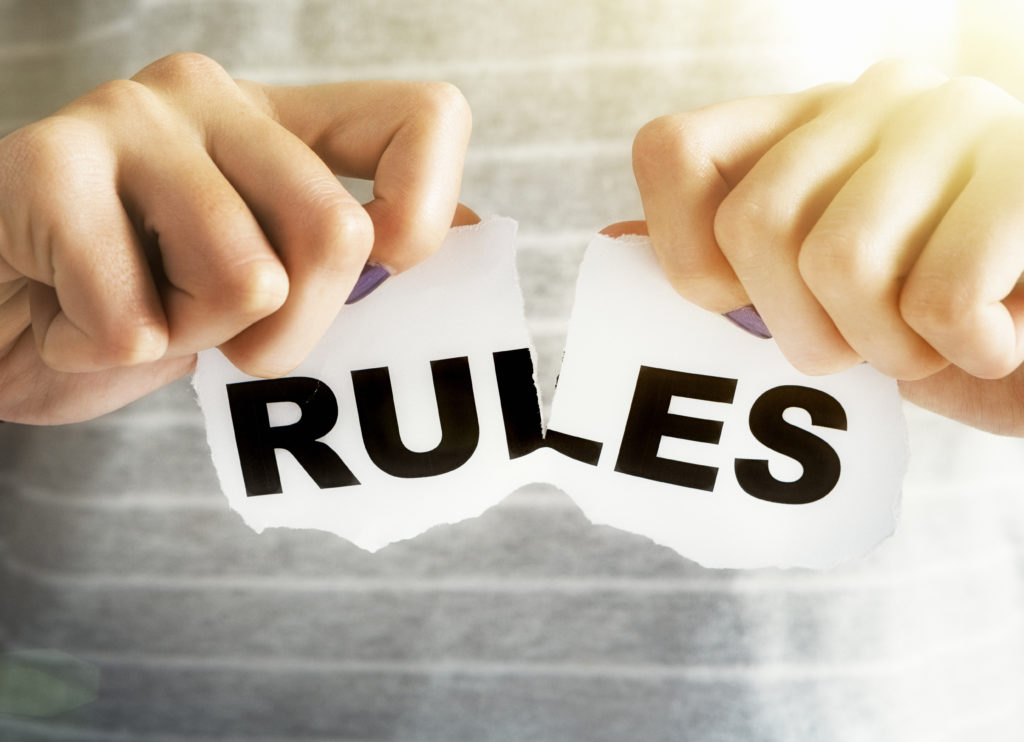- Close



Turning Rules into Equations
Ella Herlihy
Responsibilities & Values

Curfew: 10:00 pm on weeknights. 11 pm on weekends.
No video games except from 8-9 pm.
Homework time is from 3-5 daily.
No Social Media until you are 17.
Rules. Rules. Rules.
How many kids do you know who love rules?
I haven’t met very many kids who like rules. But we all need boundaries for our behavior. As we work toward raising kids ready for real life, how can we switch the paradigm from a list of rules to a set of equations where their input and choices influence their outcomes?
When you remember our own childhood, you probably think of playing on the neighborhood playground after school, coming up with games or playing sports with a modified set of rules. Today’s children spend more time in structured than unstructured activities. Instead of drawing boundaries for a field with sticks and working out the details of what constitutes a home run or a goal, they play on chalked off fields with coaches instructing them. Instead of using Legos to come up with their version of a house or helicopter, many “engineers” follow the intricate instruction booklets included with every new boxed set. Instead of creating a town for Barbies or stuffed animals, television and video games fill the after school hours for many children.
We need to give kids room to create their own rules.
Darell Hammond, who lived in a group home as a youngster, founded the non-profit KaBoom to encourage communities to improve the lives of children. He urges kids to “get off the soccer field and onto the playground. Children need to get out of the gym and into neighborhood stickball games. We need to give kids room to create their own rules, set their own terms, and move their bodies in their own ways.” When kids are empowered to make their own rules, they learn executive function skills and are more likely to follow them because they believe them to be more reasonable than imposed rules.
What would it look like if we switched from making rules to helping our children follow equations?
How do we maintain order in our homes and yet allow our children to participate in making and maintaining the boundaries? Tim Elmore of Leading the Next Generation give some suggestions.
One thought is, take an age-old parent/teen dispute. Perhaps instead of having a curfew for teenagers, we could have some parameters around what time they come home. For example: before you leave, we want to know where you will be, who you will be with, and an approximate time you will be home. If you find you will be more than half an hour late, text us to let us know. As long as you are reasonable with these guidelines, you don’t need to have a set curfew time. Seems a bit scary as a parent to not know exactly when your son or daughter will be home, but if we want them to be able to navigate managing their own time in the future, this is a good step.
Another thought is what to do about video games or social media time? That’s another doozy. As a parent, it is much easier on us to have rules around these issues so we can try to manage them. However, learning how to manage oneself online is going to be a vital skill for everyone in this generation. It is prudent to allow tweens and teens to manage themselves while they are still at home and have parents to guide them. Because we each currently have various gaming and screen time rules, an equation for these will look different for each family. Things to consider might be: having a list of responsibilities to be completed before screen time is allowed, letting your older kids determine how much screen time they think is reasonable, and then asking them how they will manage sticking to their limit. With younger children you might have an equation that allows a one-to-one or one-to-one-half ratio for earning screen time. If they read/play outside/do chores for an hour, then they earn commensurate screen time to use at their discretion.
When kids are involved, there is more compliance.
If we change the paradigm from setting rules in an attempt to control our child’s behavior to discussing boundaries and equations for achieving a mutually agreeable goal, we may find we have fewer arguments. When kids are involved in making the equations, you set them up to develop executive function both in negotiating the parameters and in learning how to manage themselves within their new freedoms.



